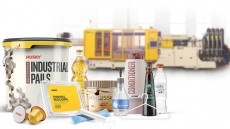Citric acid: industry warned of shortages as prices hiked again
they struggle to meet costs, but they repeat their warnings that
the industry may soon be facing shortages.
US and European producers of the ingredient have been increasingly squeezed into an unprofitable market through the threat of cheaper Chinese production and continuing high raw material costs. This has resulted in a succession of producers dropping out of the market. Last year Solaris closed its citric acid plant in India, and the year before that ADM closed a facility in Ireland. In 2003, Aktiva bolted up its plant in the Czech Republic, while a Quimixa Mexama plant in Mexico - belonging to Tate & Lyle - also closed in recent years. Tate & Lyle this year also closed its citric acid plant in the UK. This has left an extremely sparse citric acid presence in the West. There are three plants still functioning in the US, run by Cargill, ADM and Tate & Lyle. Jungbunzlauer owns a facility in Canada and another in Austria. A second European plant is found in Belgium and is run by DSM. In South America, Cargill has a plant in Uberlandia, Brazil and Tate & Lyle operates a facility in Santa Rosa, Brazil, as well as running a joint venture in Cali, Columbia - and there the list ends. Remaining players have repeatedly raised the price of their ingredient in an attempt to pass on some costs to customers, but the success of these hikes has at best been "mild", according to Cargill. Nevertheless, producers are again faced with the need to raise prices for the coming year, and with new contracts soon to be negotiated, they are desperately trying to convey the message that unless the blow is shared there will soon be shortages. Cargill last month sent a letter to customers announcing a $0.10/lb increase to contract sales of the ingredient, in an effort to approach the $0.60/lb price range that it says it need to achieve. Jungbunzlauer also said it "absolutely" has plans to increase prices, and - although it is still evaluating exact levels - it said these are likely to be double-digit. They warn that unless users can absorb some of the extra costs, the industry will be faced with further consolidation, supply shortages and possibly little alternative to Chinese supplies, which some companies wish to avoid due to quality and safety concerns. Indeed, the European Commission yesterday published a notice announcing that it will launch an antidumping investigation concerning imports of citric acid from China, which are damaging the business of Western producers. However, cheaper Chinese production is not the only threat to the market. Another major issue is the raw material situation, which is increasingly tightening. Citric acid is a fermentation product, which means it can be made from a number of carbohydrate products including corn and sugar. But external pressures, such as changes to the EU sugar regime, lower acres due to bad weather, and of course growing competition for crops from the biofuel industry, have resulted in raw material shortages and consequently higher prices. "There's more pressure from other products competing for corn - including other food ingredients like starches and sweeteners. Some of those products have managed to keep up, but citric acid is a lag behind in the industry," said a Cargill spokesperson. "There's only so much corn out there and companies have to play somewhat of a balancing act to see where the corn will go," he told FoodNavigator-USA.com. A second challenge facing the industry has been the development in the natural gas and oil situation over the past year, which has been steadily increasing, thereby further pushing up costs. Although this has also been an issue in the past, producers are feeling the strain more now as they are faced by pressures from all directions, said a spokesperson from Jungbunzlauer. A third challenge that users of citric acid in the food industry could soon be facing is an increased sourcing of the ingredient for other uses. Specifically, imminent legislation in the detergent market could soon see the ban of phosphates in these products, which would mean that more and more detergent manufacturers could be turning to citric acid or sodium citrate - two of the primary replacement ingredients. Depending on the timing of such a move, and on the state of the supplier market when it happens, this could have a "serious impact on availability", warn the citric acid producers. Citric acid currently dominates the category of organic acids. On the back of numerous applications for the ingredient, consumption is expected to grow strongly until 2009, with the market value exceeding $2 billion.












